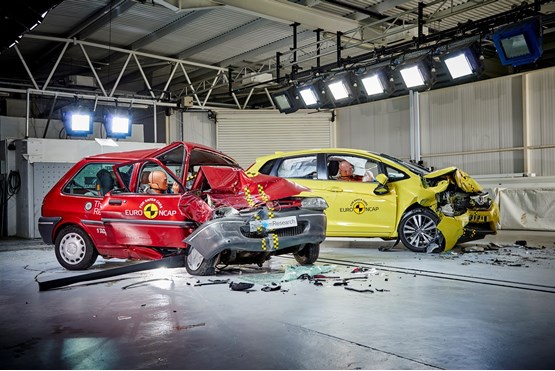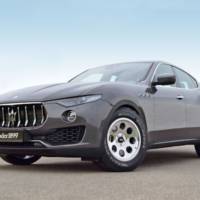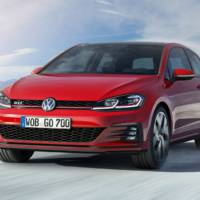Safety is one of the main concerns of current manufacturers and EuroNCAP helped them achieve better and better results on the European market. There are now 20 years since EuroNCAp started testing vehicles safety and a recent statistics show that more than 182,000 killed and serious injuries have been saved only on UK roads. This equates to 15,000 per year.
The tests, introduced in February 1997 exposed hidden dangers in top-selling family cars, forcing a fundamental rethink in the way vehicles were designed to prevent injuries and save lives. Twenty years on, 9 out of 10 cars sold on the European market hold a Euro NCAP rating.
Today, as the results of a crash-test between two family cars built 20 years apart (a 1997 Rover 100 and a current Honda Jazz) underline major advances in vehicle safety.
Thatcham Research, who conduct UK tests for Euro NCAP, estimates that advances driven by rigorous testing has helped deliver a 63 per cent reduction in car occupants killed and seriously injured, from 23,000 in 1997 to 8,500 in 2015.
Over the same period the number of pedestrians and cyclists killed or seriously injured has fallen by 40 per cent, from 14,500 in 1997 to 8,500 in 2015.
Since 1997 Euro NCAP has assessed 629 different car models, resulting in nine out of 10 cars now sold in Europe holding an official Euro NCAP rating. Safety technologies that were non-existent or optional at best – such as driver and passenger airbags, side curtain airbags, seatbelt reminders and electronic stability control – are now standard on most cars sold in Europe.
Backed by the UK Government, the FIA (Federation Internationale de l’Automobile) and the Swedish and Dutch Governments, the first Euro NCAP crash test results were revealed on February 4 1997. Until then car makers had to meet only basic legislative crash test requirements for new cars. They conducted their own crash tests but they were not standardised – and the results were not published. It was impossible for consumers to compare the safety of one car with another.



